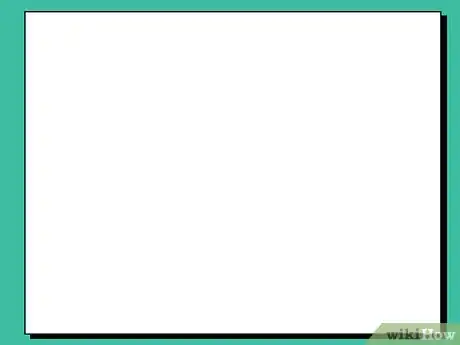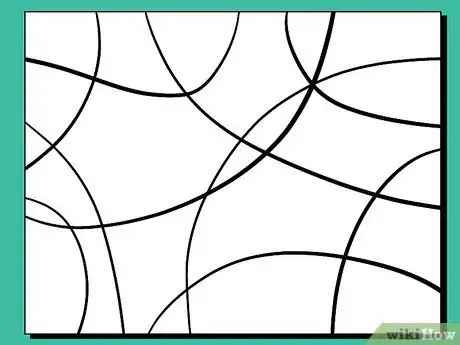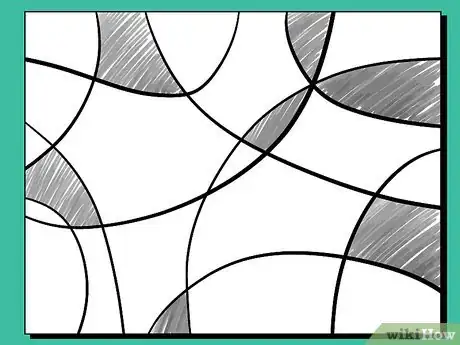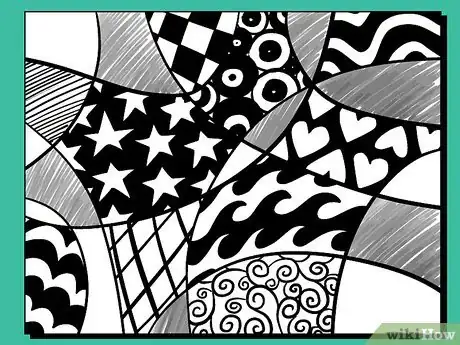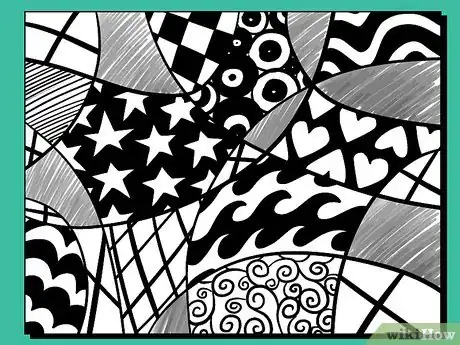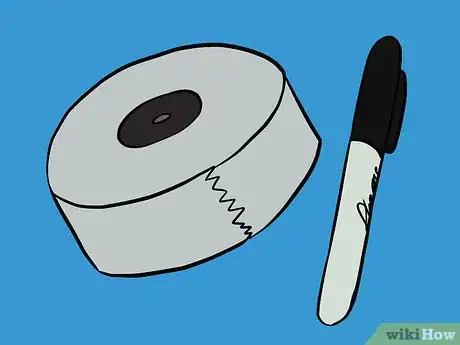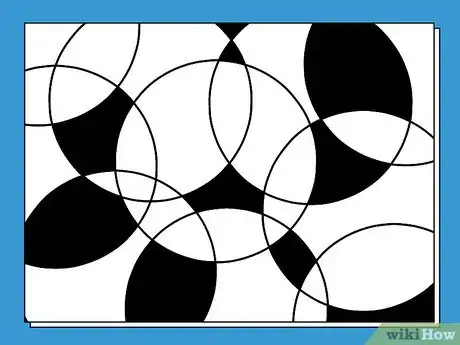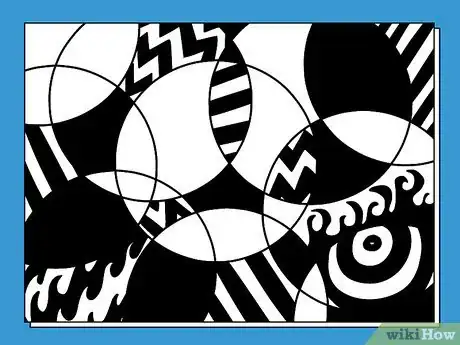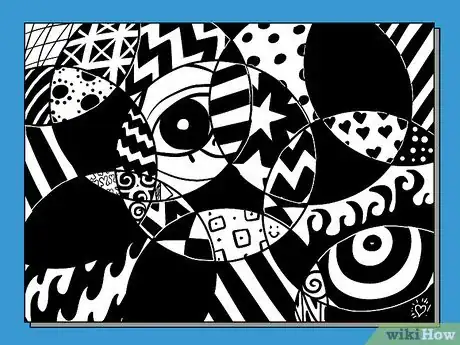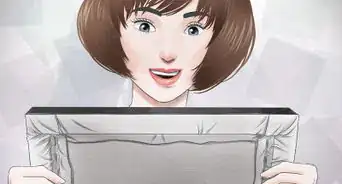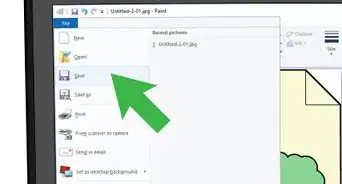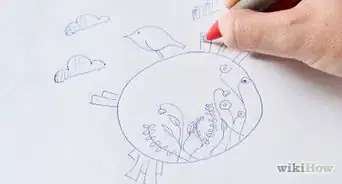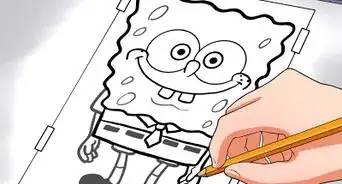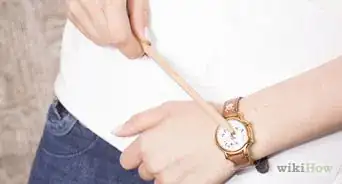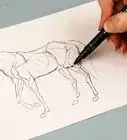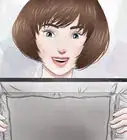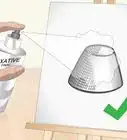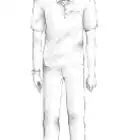wikiHow is a “wiki,” similar to Wikipedia, which means that many of our articles are co-written by multiple authors. To create this article, 24 people, some anonymous, worked to edit and improve it over time.
This article has been viewed 258,348 times.
Learn more...
Have you ever considered drawing a “nothingness?” These abstract drawings reveal your artistic inspiration without any specific intentions—they’re completely moved by your creative spirit. It’s hard to pinpoint exactly what nothingness should be, since that’s up to you (the artist!), but a few ideas or guidelines can certainly help. In this article, we’ll show you how to experiment with abstract lines and overlapping circles to create an abstract work of art that’s all your own. Let’s get started!
Steps
Drawing Random Lines
-
1Start with a blank canvas. In this case, a simple piece of blank paper. (See Things You'll Need for size suggestions.)
-
2Drawing across the canvas with random lines that split up the blank as much as possible. Send these lines all the way across the page. Don't leave anything cut off in the middle of the paper but continue to draw the lines from side to the other, without end.Advertisement
-
3Fill some of the shapes in that arise in the areas between all of the lines. Just keep using your pencil. There is no pattern to follow; just make it a block of choices in one part of your canvas.
-
4Fill in the majority of the shapes left. Use random patterns and similar stuff. Preferably go for big shapes but you're free to use small ones too. The important essence of nothingness, though, is to follow the random patterns all the time, letting the randomness decide the form for you.
-
5Fill in the rest by just putting a cross in them. Go on - try it; it might not seem like a good idea but it will look great.
Using Overlapping Circles
-
1Find something small and circular. For example, a cup or a roll of duct tape. Also use a Sharpie™ with both a fine and regular tip for this whole project; it makes it pop more than pen or pencil.
-
2Trace the circle many times with multiple overlapping areas.
-
3Black out a few non-touching areas of your choosing.
-
4Use patterns to fill the rest of the spaces. Make sure no single pattern is touching the same pattern.
-
5Alternate filling the background from black to white in the patterned areas, so that a pattern with a black background is touching a pattern with a white background.
-
6Finished. Make any final touches you feel are needed.
Community Q&A
-
QuestionWill abstract methods help me have an idea of what to draw?
 Community AnswerI personally find that I make abstract art when I have a creative block, then I lose the block and I feel inspired. Then I start to sketch and form an idea.
Community AnswerI personally find that I make abstract art when I have a creative block, then I lose the block and I feel inspired. Then I start to sketch and form an idea. -
QuestionWhat does 'abstract' mean?
 Community Answer'Abstact' is an adjective meaning 'existing in thought or as an idea but not having a physical or concrete existence, or dealing with ideas rather than events.'
Community Answer'Abstact' is an adjective meaning 'existing in thought or as an idea but not having a physical or concrete existence, or dealing with ideas rather than events.' -
QuestionHow long will it take?
 Community AnswerIt depends on how much effort and time you dedicate to it for detail, outline and proportion. You could spend an hour on it without putting effort into it, or maybe half an hour for concentration. It varies for different individuals.
Community AnswerIt depends on how much effort and time you dedicate to it for detail, outline and proportion. You could spend an hour on it without putting effort into it, or maybe half an hour for concentration. It varies for different individuals.
Warnings
- In step 3 of Method 1, don't fill in all the small shapes. This cannot be stressed enough because it affects the overall appearance of your artwork.⧼thumbs_response⧽
- Be wary of using pen. This is mainly because pen ink often ends up looking like someone's bored doodle they might make sitting through a long telephone call. You want art, not banal scribbling.⧼thumbs_response⧽
- Never give up - "nothingness" is key to abstract art, so you can't go wrong! If you don't like something, try adding to it, the worst outcome could be that you still don't like it.⧼thumbs_response⧽
Things You'll Need
- Paper (not too big or you won't be able to fill them all in, the biggest you might be able to do within 1 day is A4)
- A good sharp pencil (HB)
- Sharpie™
